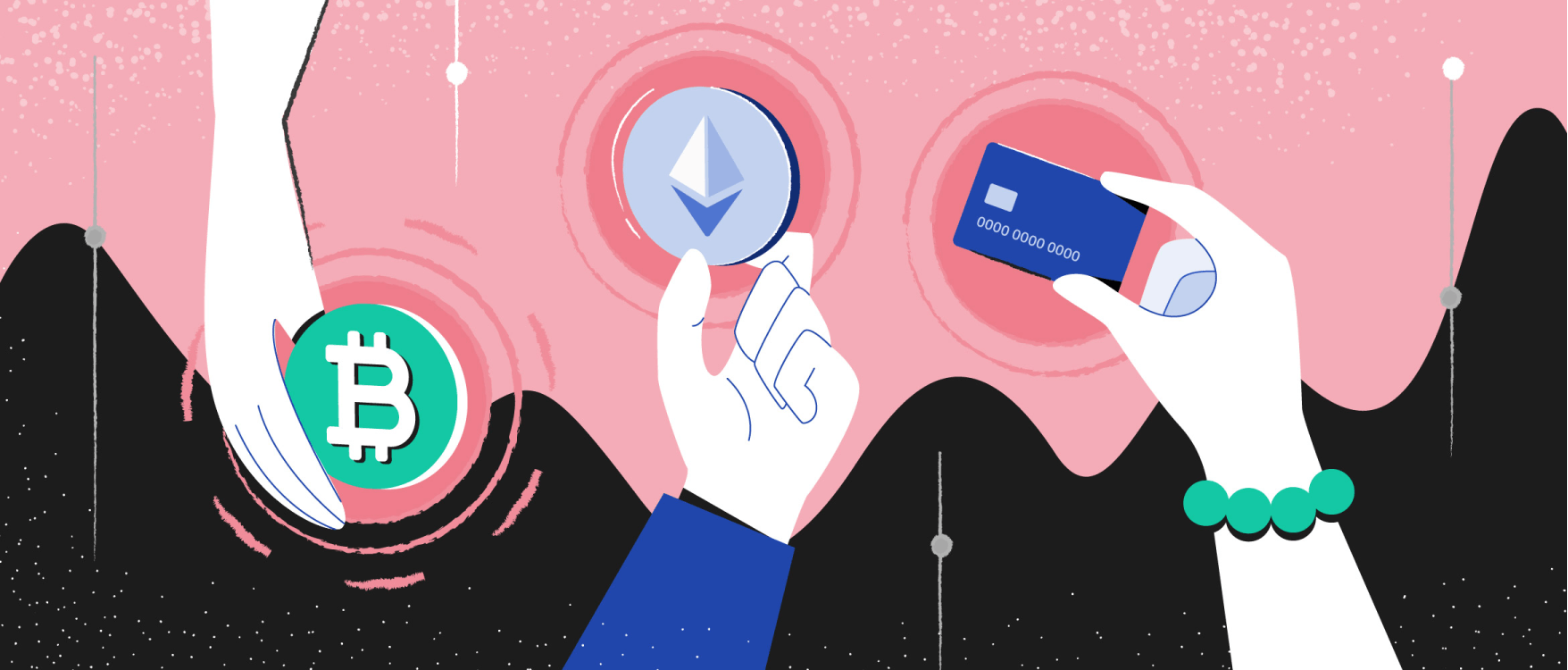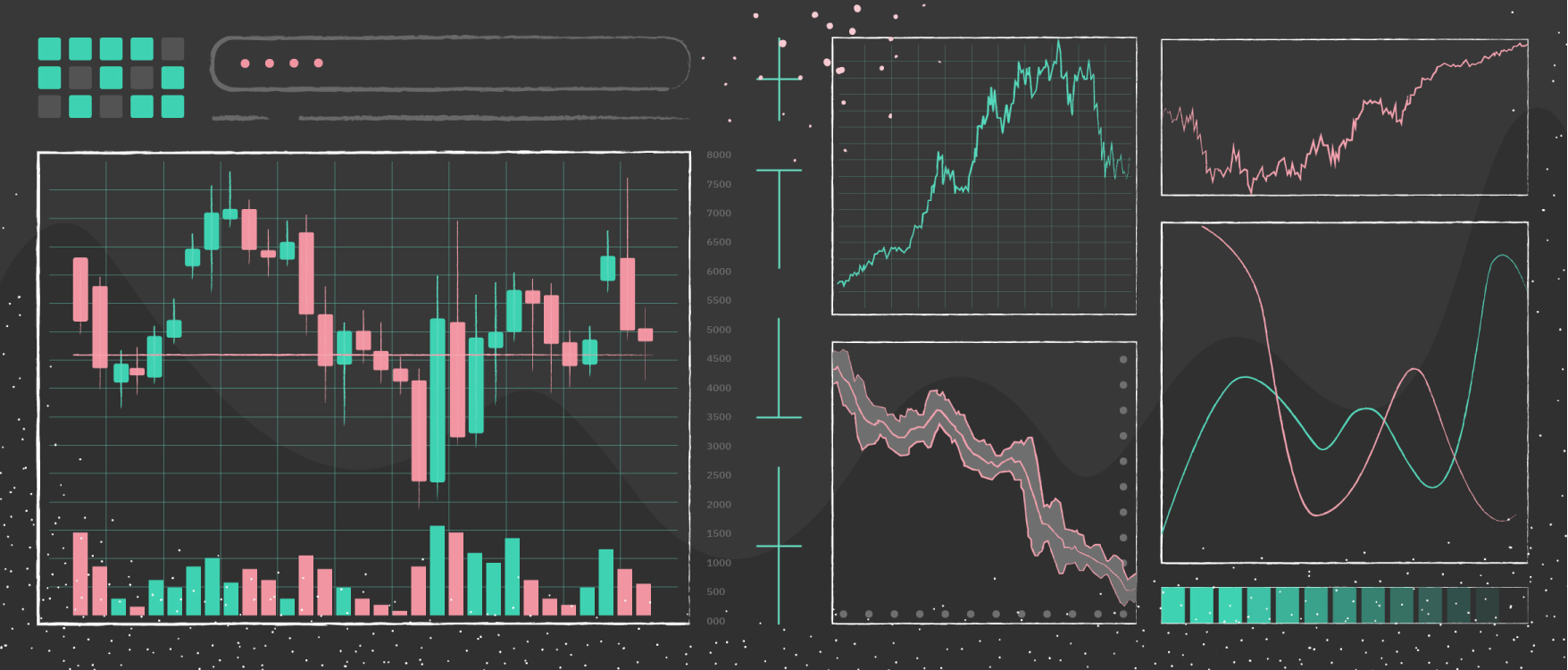
- All
- Tools
- Analytics
- Technical Analysis
- Trading
- Blockchain
- DeFi
- Guides
- Company News
- Educational
- Opinion
- Price Predictions
- Market News
- News
- Trading cases
- Practical guides
- Exchanges
- Trading signals
- Cryptocurrency
- Crypto bots
- Other
Become a crypto master
Learn everything about crypto,
trading and bots

How to Trade Cryptocurrency
Cryptocurrencies have become a global phenomenon, yet people are often confused with how to get started with crypto trading. However hard newbies try, many of them give up on trading after a while because it seems too complicated. This article walks you through the steps you need to follow to get started with trading crypto in no time.
Start Trading on 3Commas Today
Get full access to all 3Commas trading tools with free trial period

Picking a crypto exchange
The first and main criterion is a platform’s fee. You’ll pay a fee twice per deal: once when you buy an asset, and then when you sell it. So, if you see a 0.25% commission, in fact, it’s 0.5% for the whole deal.
An exchange’s fee is not always the same; it depends on whether you trade as a maker or a taker. Makers place limit orders, telling other market players that they (makers) are willing to buy/sell at a certain price. Thus, everyone knows that there is demand for crypto; consequently, the liquidity increases. The exchange encourages such traders with lower commissions.
Takers, on the other hand, consume liquidity by placing an instant order. This behavior makes the market less predictable, hence the higher commission rates.
Exchange | Feature | Cryptocurrencies available | Fees (Maker/Taker) | Rank |
|---|---|---|---|---|
Binance |
| 350+ | 0.1%/0.1% | A+ |
Bittrex |
| 350+ | 0.75%/0.75% | A |
Coinbase Pro |
| 50+ | 0.5%/0.5% | A+ |
Binance.US | Accepts US traders | 50+ | 0.1%/0.1% | A |
Kraken |
| 50+ | 0.16%/0.26% | A |
Let's take a look at the process of getting started in crypto trading, using Binance.com as an example.
Step 1: Sign up
Go to Binance.com and press the Register Now button.
Although the procedure is simple enough and doesn’t differ much from signing up on other sites, there are some unique features. You have to enter a 6-digit code from an SMS and then another code from an email. If you try to enter the codes in reverse order, it will not work. Confirm the SMS code first, then the email code.
The next step is to set up additional security for the account. To do this, open the account menu next to Orders and select the Security submenu.
Turn on Google verification right away. You’ll get these benefits:
- Increase your withdrawal limits
- Buy or sell crypto with your preferred financial solution
- Access to Peer-2-Peer trading marketplace
Verification is an extra security measure that will keep your account safe from fraudsters. An irretrievable loss of crypto is the last thing you want.
The rest of the security settings can be turned on later, but don’t forget to do that if you’re going to store cryptocurrency directly on the exchange.
Step 2: Funding your account
Once you've activated Google Authentication, it's time to top up your balance. You can do this by using the guest board. It might look like the picture below:
Binance offers four deposit options to choose from: bank deposit, credit/debit card, P2P trading, or third-party payment. There is no fundamental difference between them: use the one that is most convenient for you. You will receive a notification shortly after funding an account.
Step 3: Explore the basics of the platform
To proceed, click on the yellow squares in the top left corner. Then, go to Exchange to explore its interface.
After you click on the exchange icon, you will see the following screen:
This is what the startup interface on the Binance exchange looks like. You can choose your display options on the Trade tab. Both Convert and Classic are easy-to-use interfaces for beginners. The Advanced tab gives full access to all the trading tools. Margin increases your profits with leverage, yet multiplies your chances to lose money. Basically, you trade on the funds of a third party (you can open a position that is larger than your balance). Thus, the margin tab is best only for experienced traders. To begin, opt for Classic.
Step 4: Getting started with currencies
Now you have to decide what currencies you want to trade. You can see the possible currency pairs at the top right part of the screen.
The abundance of cryptocurrencies can baffle not only newbies but even experienced traders. Instead of investing in speculative, high-risk coins, you can go for more reliable and time-tested options. Consider the following crypto to get started:
- Bitcoin (BTC). The foundation of the crypto world. This coin has potential and the largest market cap as well.
- Ethereum (ETH). Another innovative coin. In fact, it’s more than a coin: It’s a network to create other coins. Etherium is the second biggest player within the crypto market.
- Binance Coin (BNB). This coin is experiencing high growth because the Binance exchange is constantly growing, additionally it’s a utility token on the Binace exchange; holding a small amount of BNB on your account can provide a 25% discount on your trading fees.
- Tether (USDT). A crypto that emulates a digital Dollar. The supply of Tether is managed to keep it so 1 Tether is the same as $1 USD.1:1.
- Cardano (ADA). An underestimated digital currency worth trying out.
- Polkadot (DOT). Some traders call it a dark horse due to its hidden potential. Polkadot may fit long-term trading strategies.
Once you’ve picked a coin or two, it’s time to set your first trading pair. First, select the coins you have in your wallet (maybe you have USD “fiat” currency in your exchange wallet?) Then type any name from the parenthesis in the list above into the search bar.
The page updates automatically when you pick a new pair. The redlines in the picture below indicate traders who are willing to sellthe currency, and the greenones indicate buyers.
At the bottom of the screen, you will find the main menu, from which you can buy or sell currencies on the exchange. By default, the system will offer you to trade in Spot mode, which is the most suitable for beginners. It’s also known as immediate delivery on a certain date. Cross and Isolated are types of margin trade, which utilize the full amount of funds available; thus, they require both knowledge and hands-on experience.
This section consists of two blocks: buy and sell. Both boxes include such parameters as price and amount.
For example, say you want to buy 0.002 bitcoins at a price of $37,000 per bitcoin. To do that, you need to enter the data in the corresponding cells and click the green button. To sell 0.001 bitcoin at $37,500 each, you need to fill in the red cell on the right and click the button.
Those are the basics of Binance trading. You might want to check out other exchanges as well. Sign up on several platforms and take them for a spin. Whatever exchange you use, it should look appealing to you. Swap it out if you don’t like charts, statistics, etc. Once you’ve found a decent option, it’s time to fund your account and get started with crypto trading.
First steps to trade crypto
There are two ways of trading crypto:
- Buying and exchanging coins. You become the owner of the assets.
- Contract for difference derivative trading (CFD). You do not take actual ownership of the coin.
Once you’ve purchased coins, you can either store them on the exchange or transfer your assets to a personal e-wallet. You can read more about that in our crypto wallet guide.
Crypto trading strategies
Like any other market, the cryptocurrency market is driven by supply and demand. What sets the tone is the overall state of the cryptocurrency ecosystem:
- The total number of coins
- The actual and perceived value of coins
- Technology updates, security and regulation issues
- Real-world adoption. For instance, integration into common payment systems and retail.
To earn on the crypto market, you can go for active or passive trading strategies:
Active strategies: more time and engagement needed | Passive strategies: less time and engagement needed |
|---|---|
Day trading: Playing on price moves that occur within a day. | Buy and hold or HODL: Holding an asset for a long time, no matter what. |
Swing trading: Taking advantage of volatility within several days or weeks. | Index investing: Investing in a set of crypto assets (like buying ETFs) to leverage the combined performance. |
Trend or position trading: Playing on uptrends and downtrends triggered by events that happen within several months. | |
Scalping or HFT (High-Frequency) trading: Playing on market inefficiencies by taking small short-term moves. |
Active strategies are suitable for quick learners and individuals who are eager to trade. This approach may be riskier, but the reward is well worth it. With the passive approach, you are a bystander rather than an active participant. If you devote little time to trading, passive strategies might fit your agenda. In both cases, you can either dive in and learn from your mistakes, or analyze the most popular trading strategies in advance.
Tips for safe crypto investments
- Secure digital currency storage. Traders use digital wallets and exchanges to store purchased crypto. Depending on your goals, both options may be useful. The features and security levels are not the same for every wallet. For example, offline wallets (a.k.a cold wallets) are safer than others, but you can’t instantly sell the crypto stored on them.
- Diversify your investments. Even if bitcoin sounds appealing to you, don’t invest all your money in one single crypto. There are tons of possibilities available: diversify your assets across multiple currencies.
- Beware of scams. Malware, fake cryptocurrencies, low-quality signals, pyramid schemes: those are just the tip of the iceberg. Dishonest people have always deceived, are deceiving, and will continue to deceive those who allow them to do so. Don’t be lured by the prospect of easy money.
- Take volatility into account. If dramatic price fluctuations are too much of an ordeal for you, consider other securities. Cryptocurrency is relatively young and still not established. Investments in something new require constant research.
Most common cryptocurrency trading mistakes
The biggest mistakes in cryptocurrency trading are not always related to analysis or financial knowledge. According to statistics, your ability to manage your emotions and understand people also plays a crucial role in the trading process. For example, many people overestimate their capabilities or lose money in the pursuit of making a quick fortune. With that in mind, take a closer look at the key mistakes.
Mistake #1: Making purchases based on recent news
As a rule, data that can lead to a rise in price becomes obsolete before you can use it. If you trust your information source, use a stop-loss order. Let's say you buy bitcoin at $38,800 and expect the price to go up. To protect yourself from sudden drops, you can set a stop-loss order at the point of purchase. If the bitcoin price falls, the exchange will automatically sell your positions, thereby preventing losses.
Mistake #2: Letting greed take over
If you buy bitcoin before a sharp price rise, it would be safer to sell some coins and put the rest on a stop-loss order. There’s no need to play roulette with the crypto market.
The other side of greed is the pursuit of easy money. NEVER trust your capital to strangers, other traders, or anyone else.
Mistake #3: Not trading with disposable income
Beginners often borrow money in the hopes of making money on cryptocurrency. The reality is, trading always involves risk, so allocate a portion of your budget which won't be a blow for you if you lose it. The exchange is not a gold mine: take your time, learn from others, make mistakes, and gain experience from them. Perfection takes time, after all.
Mistake #4: Forgetting about the need for constant learning
Trading in the cryptocurrency market is not a casino but hard, nerve-wracking work. It can take years to understand how asset prices behave in any given situation. To speed up the process, you should write down your trades: this will help you adjust your trading strategy and eliminate critical mistakes.
Also, start your trading journey with just a few simultaneous cryptocurrency trades. Don’t open trades on many different cryptocurrencies at the same time until you have gained confidence and experience.
Learning to Trade in 2025: Automation First, Then Strategy
In 2025, new crypto traders are onboarding into a vastly more mature ecosystem—one where learning to trade means learning to automate. Manual trading still exists, but the default entry point for serious participants is now crypto bot trading, often using AI-assisted tools that simplify strategy testing, execution, and risk control.
Platforms like 3Commas help beginners get started with templates powered by backtested logic. New traders can choose between momentum-based ai trading bot crypto setups or safer long-term strategies using dca bots with layered safety orders. These tools include built-in backtesting, performance simulation, and real-time alerts.
Educational content now focuses not just on reading charts but also on configuring auto trading bots, interpreting performance metrics, and understanding capital allocation models. The transition to automation is not just a trend—it’s the foundation of how effective trading is taught and executed in 2025.
FAQ
When you pick an exchange, pay extra attention to fees, overall convenience, and coins available for trade. Don’t trust anyone who promises a fortune. Always double-check crypto platforms.
To earn on the crypto market, you can go for active or passivetrading strategies. Active strategies may be riskier, but the reward is higher. With the passive approach, you are a bystander rather than an active participant. Pick whatever trading strategy fits your goals: either an active or passive masterplan can yield you money.
Diversify your investments. Avoid margin trading by all means. Never trade on your essential funds you need to live, such as your rent money or borrowed money.

A proven leader, successful at establishing operational excellence and building high-performance teams with a sharp focus on value creation and customer success.






